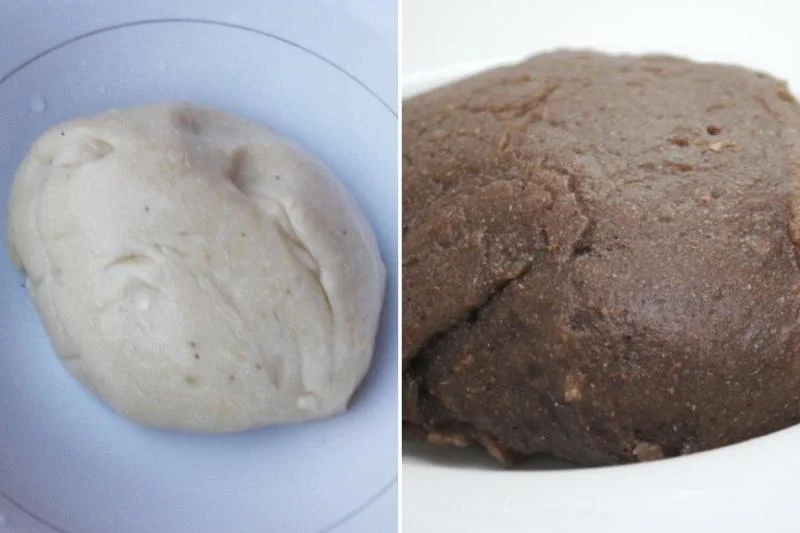The distinction between Amala and Fufu is the manner in which they are consumed. While both are typically consumed with soup or stew, the method of consumption is slightly different. Amala is rolled into balls and then dipped into the soup or stew to scoop up some of the liquid, while Fufu is often formed into small balls or dumplings and used as a utensil to scoop up the soup or stew.
Finally, Amala and Fufu also have cultural significance in different parts of West Africa. Amala is particularly popular in Nigeria, where it is considered a staple food and is often served at social gatherings and special occasions. On the other hand, Fufu is popular in many West and Central African countries and is also considered a staple food. It is often eaten as a main meal and served at social gatherings and celebrations.
What is Amala?
Amala is a starchy food commonly consumed in West Africa, particularly Nigeria. It is made from yam flour or cassava flour mixed with boiling water to form a smooth, dough-like consistency. The dough is then rolled into balls and served with soup, stew, or sauce made from meat, fish, or vegetables. Amala has a distinctive dark colour and a soft, chewy texture. It is often eaten with the fingers and is considered a staple food in many Nigerian households. In addition to its nutritional value, Amala is also valued for its cultural significance and is often served at special occasions such as weddings and festivals.
What is Fufu?
Fufu is a starchy food commonly consumed in West and Central Africa. It is made from boiled and mashed starchy vegetables such as cassava, yams, plantains, or a combination. The cooked vegetables are then mashed until they reach a smooth, sticky consistency and then formed into balls. Fufu is typically eaten with soup or stew made from meat, fish, or vegetables. A small dough ball is formed with the fingers to eat Fufu and then dipped into the soup or stew to scoop up some liquid. The dough is then swallowed whole without chewing. Fufu is a popular food in many African countries, often eaten as a main meal or snack. It is valued for its nutritional content and is a good source of carbohydrates, vitamins, and minerals. In addition to its nutritional value, Fufu has cultural significance and is often served at social gatherings and celebrations.
Difference Between Amala and Fufu
Amala is a Nigerian food made from yam flour or cassava flour. The flour is mixed with boiling water to form a smooth, dough-like consistency. The dough is then shaped into balls and served with a soup or stew made from meat, fish, or vegetables. Amala is a distinctive dark colour known for its soft, chewy texture. On the other hand, Fufu is a starchy food common in West and Central Africa. It is made from boiled cassava, yams, or plantains mashed into a smooth, dough-like consistency. Fufu is typically eaten with soup or stew and is often used as a utensil to scoop up the soup or stew. Fufu has a lighter colour than Amala and is known for its soft, sticky texture. Amala and Fufu are intended to be eaten with more flavorful soups or stews because they are tasteless. The yam flour in Amala gives it a nutty flavour, while the cassava in Fufu gives it a milder flavour.
In summary, while Amala and Fufu are starchy foods commonly consumed in West Africa, they are made from different ingredients and have slightly different textures and appearances.







